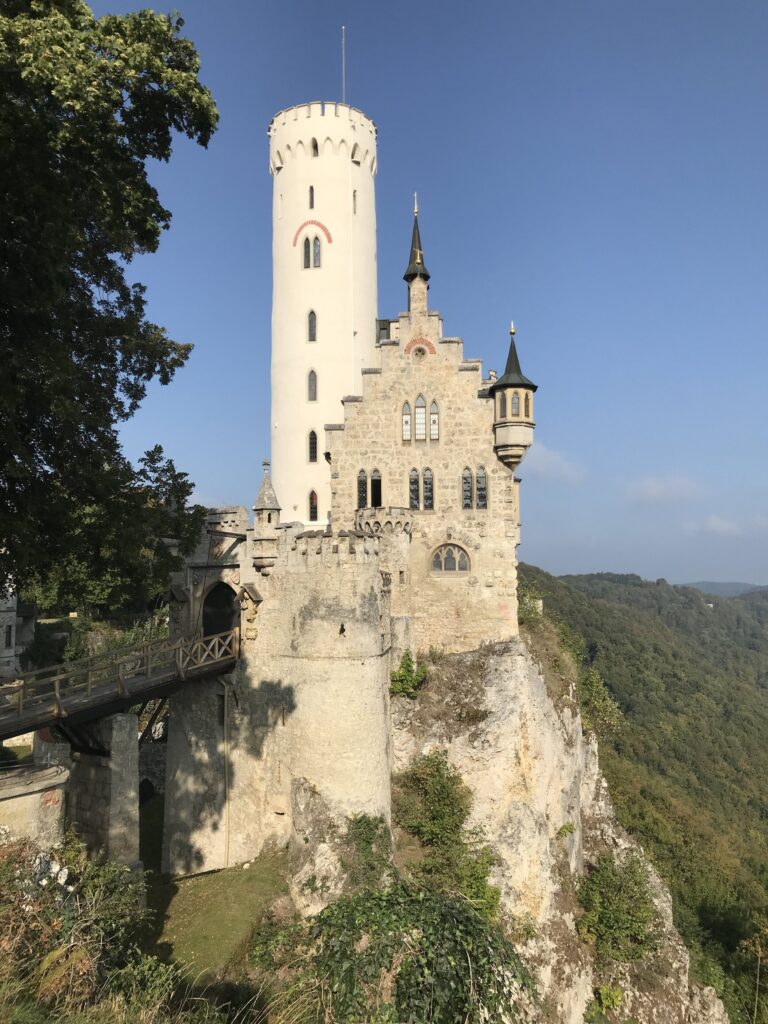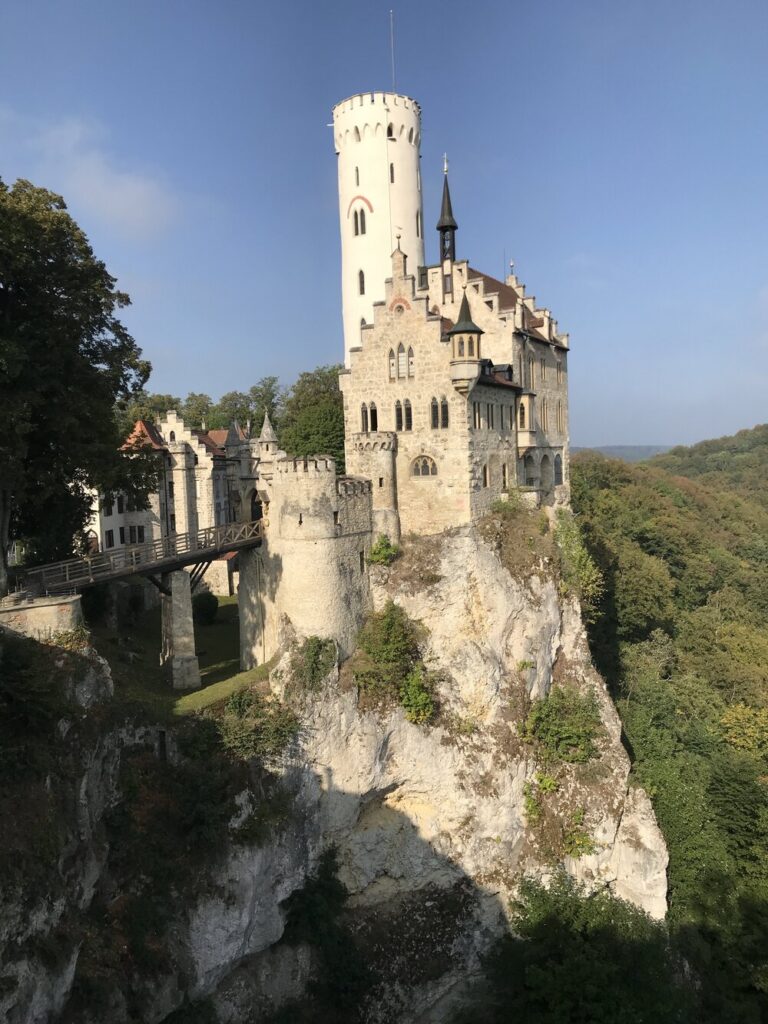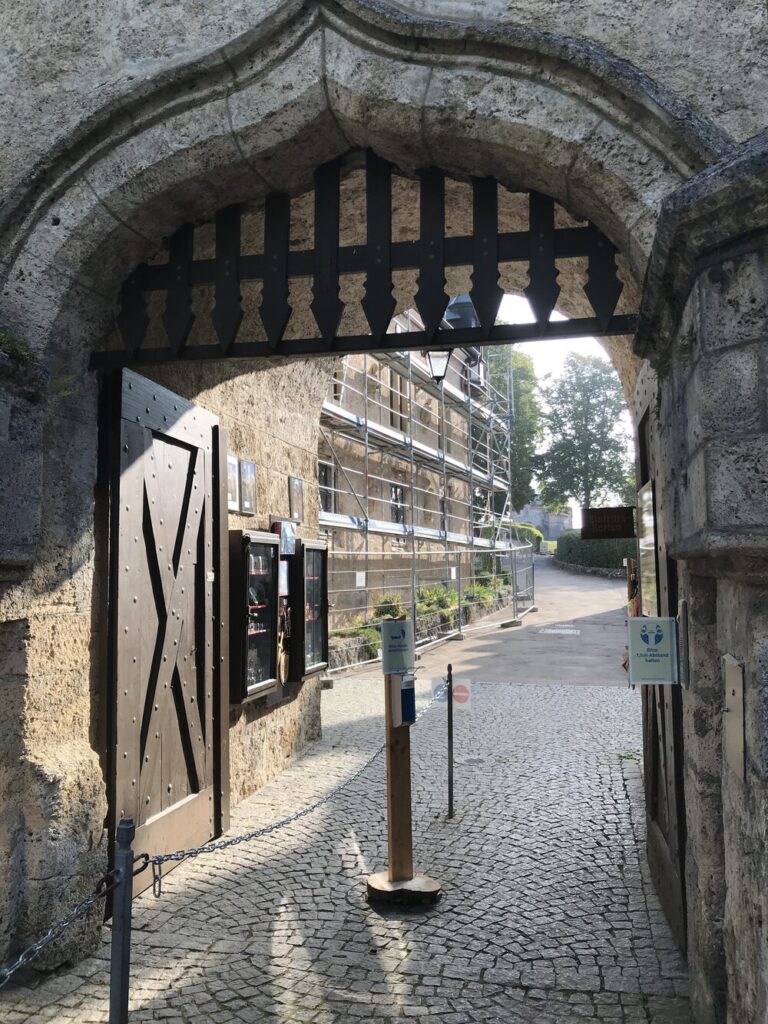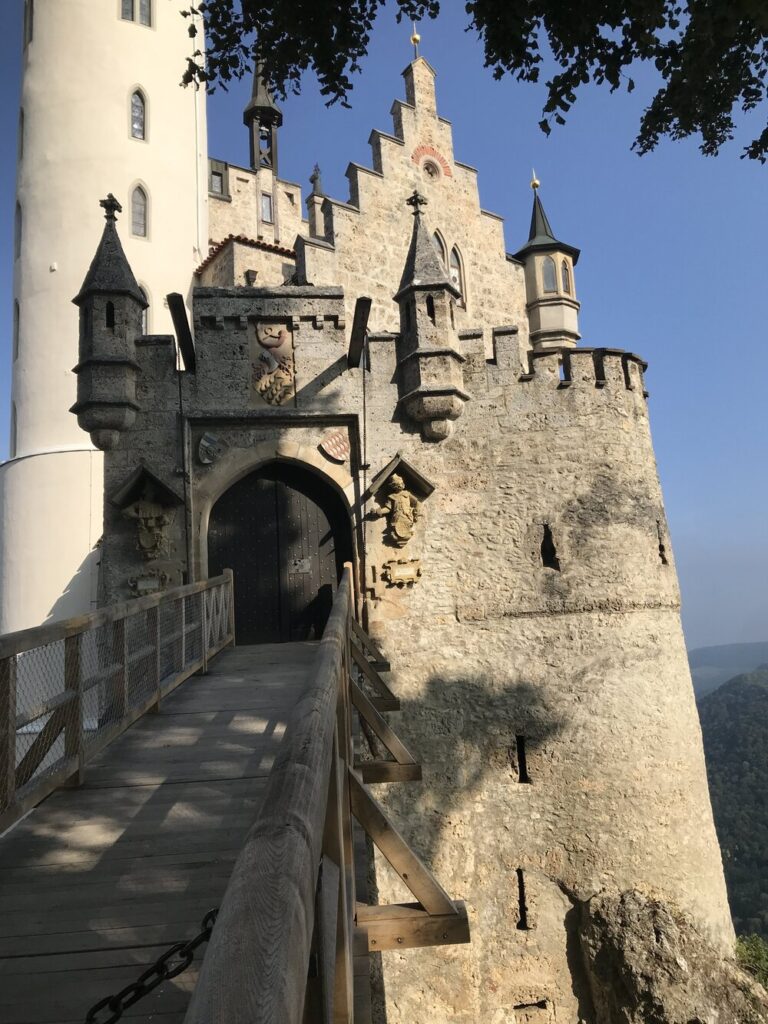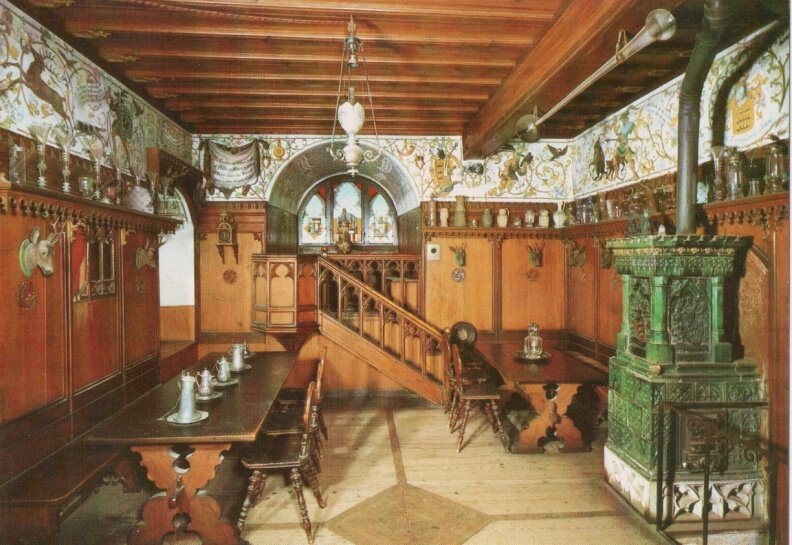The Lichtenstein castle has an interesting history, one like no other castle. There was originally a knights residence constructed, which fell to ruins, until a man thought it would be a nice hunting castle, and rebuilt it. This also fell to ruins, when Wilhelm fell in love with a castle from a book he was reading by William Hauff. He wanted to construct this castle in this location. The architect who helped him with this project would not let him build 6 stories like he wanted, only 4. It is called Lichtenstein because it is built on a stone that is really light in color. Licht in German means light, and stein means stone, hence, light stone.
Tours are possible, but it seems only in German. You can get a pamphlet that is in English, though. It is still owned and operated by the family.
The castle was designed as a summer residence, because they did not structure heat into the castle, nor was there a way to get water except from rain. Wilhelm, the one who designed the castle, had four girls with his first wife, and named a tower of the structure each after them. After his first wife died, he remarried, and had two sons with his new wife. This made him quite happy, because it meant he was able to pass on the castle to the oldest boy.
One of the rooms has a family tree painted on the ceiling, and one of the relatives was a young man (Eberhard im Barte) who was the duke of Baden Wurttemberg, and was well liked. He founded the Tübingen university, had to do with the invention of the pretzel, and implementing a regular week of cleaning up or housekeeping.
The Invention of the pretzel:
Legend has it that the Duke caught his baker stealing some royal items. Instead of having him murdered, he gave him a second chance, asking him to invent a bread that lets the sunlight shine through 3 times. The thief only had 3 days to do this. He succeeded, and the Duke’s wife is credited with coining the term: Brezel, or in English, pretzel.
The castle has since been handed down the family to the current Duke of Urach. He has a son, who is studying in Tübingen and also living part time at the castle. It is nice that the family is still living in the castle today!
Back to the castle itself:
In the dining room, space was saved by having the music room above and to the side of the dining room, where the music could flow in through the grate.
In the men’s hunting hall, there were an extensive amount of liquor glasses, one of which was as tall as Wilhelm himself, which 2-3 champagne bottles could fit inside. This was shared between two to three people, who would help the person lift it to their lips. There was a stage to tell stories and hunting tales, and the drunker the men got, the bigger their catches were, and the louder they became!
*Photo Credits below
We also learned in the room of armor that kids aged 12-14 would be trained to be knights and even had their own suits of armor. We are not sure how much those weighed, but we know the suits of armor for adults weighs about 130 kg, whereas outfits for the Samurai or Japanese knights weighed around 12 kg. It seemed like quite a task.
The castle was not harmed during the wars, except for a stray bullet that hit one of the mirrors. You can still see this spot today!
And, like at most other castles, weddings can also be held here.
Watch the video below to come on a tour of the Lichtenstein castle with us!
*Photos: Left to Right: Dining Room, Family Tree. Unter: https://www.schloss-lichtenstein.de/de/rundgang; Drinking Hall. Under: https://magsgen.com/gallery/picture.php?/321. Suits of Armor. Under: Unter: https://www.schloss-lichtenstein.de/de/rundgang.
